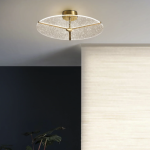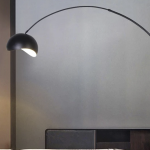
Introduction
Ceiling concealed lights are a popular lighting solution that is increasingly sought after by homeowners and architects alike. These lights are designed to be hidden within the ceiling, offering a sleek and modern look that blends seamlessly into the interior design.
There are many advantages to switching to ceiling concealed lights, including reduced glare, improved energy efficiency, and the ability to control the ambiance of a room with ease. In this article, we will explore the different types of ceiling concealed lights available, as well as their benefits and how to install them.
Types of Ceiling Concealed Lights
There are many different types of ceiling concealed lights available, each with their own unique benefits and features. Here are some of the most common types to consider:
Recessed Lighting
Recessed lighting is one of the most popular types of ceiling concealed lights. These lights are installed into the ceiling itself, with only the trim visible on the surface. They offer a clean and modern look, and are often used to highlight specific areas of a room, such as an artwork or architectural feature.
Linear Lighting
Linear lighting is another popular option for ceiling concealed lights. These lights are typically installed in rows along the length of a ceiling, providing a continuous and even source of illumination. Linear lighting is often used in commercial spaces, such as offices or retail stores, but can also be used in residential settings for a sleek and modern look.
Spotlights
Spotlights are a type of ceiling concealed light that can be used to highlight specific areas of a room. These lights are often installed in a grid pattern throughout a ceiling, allowing you to adjust the angle and direction of each light to suit your needs. Spotlights are a great choice for task lighting or for adding drama to a room.
Benefits of Ceiling Concealed Lights
There are many benefits to switching to ceiling concealed lights over traditional light fixtures. Here are some of the main advantages:
Reduced Glare
One of the main benefits of ceiling concealed lights is that they reduce glare in a room. With traditional light fixtures, the bulb itself is often visible, which can create a harsh and uncomfortable glare. With ceiling concealed lights, the bulb is hidden within the ceiling, providing a softer and more diffused source of light.
Improved Energy Efficiency
Ceiling concealed lights are also more energy efficient than traditional light fixtures, as they often use LED lights that consume less power. This can help to reduce your energy bills and lower your carbon footprint.
Enhanced Ambiance
Another advantage of ceiling concealed lights is that they allow you to easily control the ambience of a room. With dimmable lights, you can adjust the brightness to suit your needs, creating a warm and inviting atmosphere that is perfect for relaxing or entertaining.
Installing Ceiling Concealed Lights
Installing ceiling concealed lights can be a bit more complicated than traditional light fixtures, but with the right tools and expertise, it can be done easily. Here are some steps to follow:
Step 1: Plan Your Lighting Design
The first step in installing ceiling concealed lights is to plan your lighting design. Determine the placement of each light, and decide on the type of light that you want to use. Make sure to choose a light that is appropriate for the size of your room and the intended usage.
Step 2: Cut Out the Holes
Once you have your lighting design planned out, you will need to cut out the holes for each light. This can be done with a drywall saw or a hole saw. Make sure to measure carefully and mark the exact location of each hole before cutting.
Step 3: Install the Lights
After the holes have been cut, you can begin installing the lights. This will vary depending on the type of light that you are using, but most will involve connecting the wiring and securing the fixture in place with screws.
Step 4: Test the Lights
Once all of the lights have been installed, you can test them to make sure they are working properly. Turn on the power to the circuit, and use a voltage tester to check for any electrical issues.






